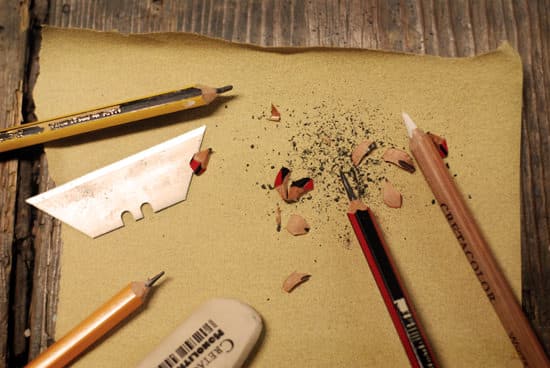The 3 reasons why you can’t draw, (and what to do about it)

Sometimes you just can’t figure it out.
It seems no matter how hard you try, how intensely you look at a subject, your drawings look wrong.
You’ve read how to draw books, maybe gone to a few art classes but the art of drawing still seems to elude you.
And you begin to question yourself – What if it’s me? What if I don’t have enough talent?
What if I’m never going to improve?
You are not alone.
Understanding drawing can be the key to both your artistic success and a new, razor sharp creative mind – but it can seem an uphill struggle.
But what if there was a simple solution? Pieces to the puzzle that you didn’t know existed,
3 secrets that could instantly improve your drawing and painting?
Wouldn’t you give it a try?..
1. What if I told you, you talk too much
Talking and drawing don’t mix.
The main problems associated with drawing is when you talk you engage your logical, language dominated left side of the brain. This side of your brain is keen on knowing an objects name, labelling it, and organising it.
Often when learning to draw, you need to temporarily hold off judgment and try not to second guess what you think the object should look like, rather than what the object actually looks like.
When you are trying to learn to draw something realistically, you have to engage your right-hand side of the brain, which is keener on images and spatial perception.
It’s very hard to do both at the same time.
Why?
Because it causes mind freeze.
Have you ever been in a creative zone of absorption, a state where time travels quickly and you are in what psychology professor Mihaly Csikszentmihalyi calls ‘flow’.
How Does It Feel to Be in Flow?
- Completely involved in what we are doing – focused, concentrated.
- A sense of ecstasy – of being outside everyday reality.
- Great inner clarity – knowing what needs to be done, and how well we are doing.
- Knowing that the activity is doable – that skills are adequate to the task.
- A sense of serenity – no worries about oneself, and a feeling of growing beyond the boundaries of the ego.
- Timelessness – thoroughly focused on the present, our sin to pass by in minutes.
- Intrinsic motivation – whatever produces flow becomes its own reward.
Flow is the mental state when you are fully immersed in an activity, a feeling of full involvement and energy.
You can get to this stage of involvement whilst drawing… until you get interrupted.
The combination of left and right battling against each other makes trying to draw tricky.
You can learn to talk and draw at the same time but it takes practice.
It all starts by understanding how your mind works, and how you can be subconsciously sabotaging your best efforts.
2. You have a harsh inner critic
You can learn to draw, you just might not believe it and this is often the first stumbling block to attaining a new skill.
Drawing is as much a mental game as an observational game.
Sure, you need a basic level of skill to hold a pencil and make a mark but not as much as you may think. It’s about the same level of skill as signing your name or throwing and catching a ball.
However, your subconscious mind is extremely powerful and it can play havoc with your best efforts when learning this new skill.
You see, your subconscious is already telling you this can’t be true.
Changing your internal script
Often successes in our lives stem from our own internal beliefs. And these can be crippling both in your progress as an artist or in any other areas of your life.
“Well-meaning, intelligent people often resort to repeating self-defeating behaviour in their personal and professional lives,”
Robert Brooks PH.D and Sam Goldstein, authors of The Power of Resilience.
If you keep on thinking you can’t draw, you won’t.
As you try and draw something realistically and it starts to go ‘wrong’ your inner critic starts to rear its head.
Often drawings start off really well and you observe things accurately, it’s only when you get to a perceived ‘tricky’ bit you start to question yourself.
The truth is you have probably started to ‘make up’ the rest of the drawing and have stopped observing, relying on what you think it looks like.
In comes the inner critic and says:
“That doesn’t look like a boat, give up now, it looks like a kid’s done it”
So what we have to do is stop labelling objects, and start to look more abstractly.
3. You label the object too much
Isn’t this correct?
You should be looking and labelling the object, you should be really concentrating on it, that is what you have to do, right?
Well yes and no.
When I’m drawing a bottle, I don’t draw the bottle.
I draw the shapes around the bottle and then the bottle is drawn for me.
Confused?
Let me explain some more.
All edges in a drawing are shared edges, you cannot draw a line without it sharing two edges.
Imagine drawing the bottom of a boat, one straight horizontal line.
That line now shares an edge with the bottom of the boat and the water.
One line, two edges.
That boat you were having trouble with is just a series of lines and shapes.




